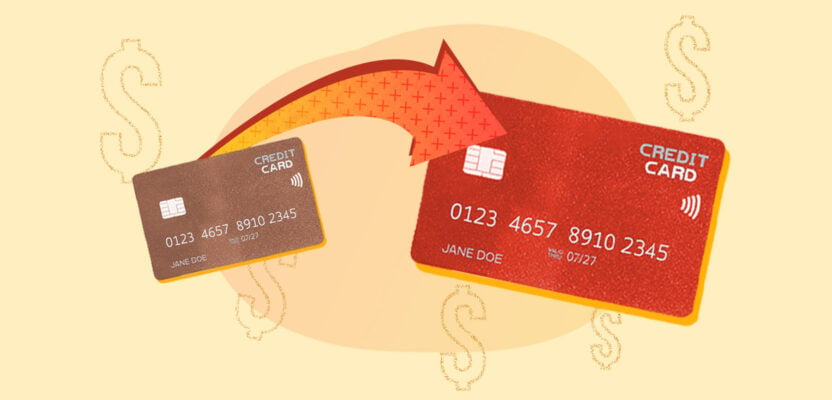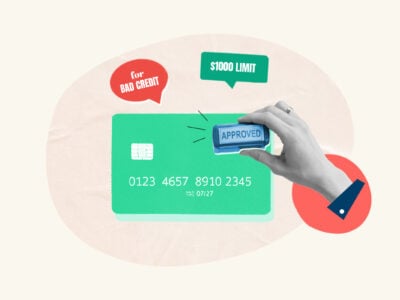Credit cards are great financial resources, but they have obvious limitations. One of those limitations, especially for new borrowers or people with limited credit card options, is how much money they can actually spend on a given credit card.
If you’re a responsible borrower who’s ready to take on a higher credit limit, learn how you can increase your available credit, how long the process takes, and how it can help or harm your credit score.
Table of Contents
4 ways to get a higher credit limit
If you’re ready for more credit, getting a limit increase may be easier than you think. Try any of the following four methods to raise your credit limit.
1. Make a request online
Many credit card issuers allow cardholders to request credit limit increases online. To see if this is the right approach for bumping up your line of credit, follow these steps:
- Check your card’s terms and conditions: This is an optional step, but can save you time in the long run. Find your credit card’s “rates and fees” page or “terms and conditions” page and search the document for information about credit limits. If they do allow them, they probably also explain how their increase system works. (If they don’t, you can skip ahead to the 4th method, “Apply for a new card.”)
- Sign up or sign in: If your card offers online account management, sign up for an account or log in if you already have an account. From there, check your account for a menu item labeled “credit limit increase” or something similar. Most major credit card issuers will have this functionality in their online systems, and allow you to apply for new credit directly from your account.
- Update your information: Once you’ve reached a credit limit increase request portal, you may be asked to provide additional information or update your existing information. One of the most common requests at this point in the process is for you to enter your current income details.
- Give it time: Most credit cards only allow credit limit increases after 6 months to 1 year of responsible borrowing, so you may not qualify for an increase if your card is relatively new. If this is the case, continue to pay your bills on time and repeat this process when you become eligible for an increase.
2. Directly contact your card issuer
If you can’t find where to request a credit limit increase online or your card issuer doesn’t provide online account management, you can call them directly and make your request.
Call the number on the back of your credit card and ask to speak to a customer representative. Once you have someone on the line, ask them whether or not you’re eligible for a credit limit increase. The representative may ask a few questions, like whether or not your income has gone up.
If your request is denied, ask them for the reason. Assuming they allow credit limit increases, request detailed information about how you can qualify for an increase in the future.
3. Check whether your issuer offers automatic increases
Some credit card companies offer automatic credit limit increases. Keep in mind that increases will likely only be offered after you’ve shown responsible borrowing habits over a period of time.
Your lender will review your account every so often (most likely every 6 months or 1 year) and ensure that you’ve been using your card and paying your bills on time.
Before you request an increase, check your credit card information, as you may already have been given a higher credit limit.
4. Apply for a new card
Your last course of action if you’re unable to secure a credit limit increase on your current card should be to apply for a new credit card.
Whether or not your new card has a higher credit limit than your current card, you’ll be expanding how much credit you have in total. Furthermore, if you’ve been using your current card responsibly, you may be able to qualify for an even better credit card than the one you have now (like a rewards card or fee-less card).
How long does it take to increase a credit limit?
Your credit card issuer will take some time to process your credit limit increase request—anywhere from a few minutes to 30 days. The exact amount of time depends on your credit card issuer and your unique financial situation. 2
When reviewing your limit increase request, your lender may look at the following items:
- Your employment status
- Your income
- Your credit score
- Your credit report
- Your borrowing history on the applicable credit card
- Your registered expenses (such as rent, alimony, and debt obligations)
- How many credit applications you’ve recently submitted
If your request is approved: You’ll usually have immediate access to your new allotment of credit.
If your request is denied: You can wait 6 months to a year and try again, or seek out a new credit card.
How often can you request a credit increase?
Every credit card issuer has their own rules on credit limit increases, including how often they can be requested. Most issuers allow you to submit a new request every 6 months.
However, be cautious when requesting credit limit increases—the action could have a negative effect on your credit score, as described below.
Does requesting a credit increase hurt your credit score?
Yes, requesting a credit increase can hurt your credit score. Credit limit increases are often approved or denied based on your creditworthiness. To check this, many credit card issuers look at your credit report.
When a lender checks your credit report, it may trigger a hard inquiry. Hard inquiries have a negative effect on your credit, although the effect is relatively minor and short-lasting (your score will usually drop by around 5 points for several months). If a credit card issuer pulls your credit through a soft inquiry, it won’t have a negative impact on your credit report.
How major credit card issuers check your credit when you request a limit increase
| Credit card issuer | How often can you request a credit limit increase? | How does the issuer check your credit report? |
|---|---|---|
| American Express | Every 3 months | Soft inquiry |
| Bank of America | Every 6 months | Soft inquiry |
| Capital One | Every 6 months | Soft inquiry |
| Chase | Any time | Hard inquiry |
| Citibank | Every 6 months | They don't check your credit |
| Credit One | Every 6 months | Soft inquiry |
| Discover | Any time | They don't check your credit |
| Wells Fargo | Any time | Hard or soft inquiry |
How a higher credit limit can help your credit score
On the other hand, getting a higher credit limit can improve your credit score in the long run.
Adding credit to your borrowing portfolio can improve your credit utilization rate, which counts towards 20%–30% of your credit score.
Credit utilization is the amount of your available credit that you’re using. It’s calculated by dividing your balance across all of your credit cards by your total credit limit (again, across all of your cards). The resulting number is converted into a percentage, giving you your credit utilization rate. You want this number below 30%, but even lower is better.
Example: how increasing your credit limit can improve your credit utilization
Say you only have one credit card and you charge $1,000 each month on a $3,000 credit limit. You’re using one-third of your available credit, so your credit utilization is 33%, just over the recommended maximum.
If you increase your credit limit to $5,000 and maintain your usual spending, your credit utilization rate is now 20%, within the recommended range.
As you can see, increasing your credit limit has the potential to significantly lower your credit utilization rate (depending on what your spending habits were before the increase), which can boost your credit score.






